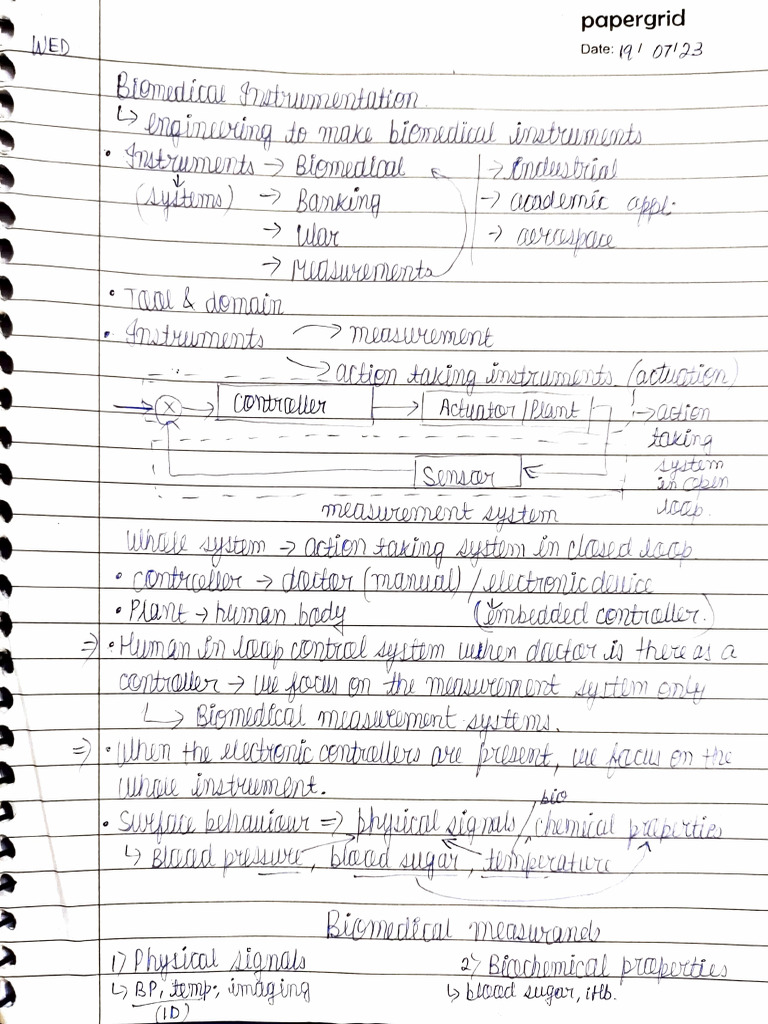Biomedical instrumentation is at the confluence of medicine, biology, and engineering. Essentially, it encompasses the development and application of instruments and devices that interact with biological systems and medical environments. This intricate discipline orchestrates a harmony between advancing technology and the burgeoning demands of modern healthcare. One might ponder, in this age of rapid technological progression: How do we reconcile the delicate intricacies of human biology with the robust capabilities of engineered systems? Moreover, what challenges arise in synthesizing these two domains for optimal patient outcomes?
To comprehensively explore biomedical instrumentation, we can categorize it into several crucial components: the types of instruments, the principles of operation, their applications in medicine, and the associated challenges encountered in the field.
Types of Biomedical Instruments
The spectrum of biomedical instruments is broad and varied, encompassing devices that perform diagnostic tests and therapeutic functions. Broadly, these instruments can be classified into several categories:
- Diagnostic Instruments: These tools are integral to identifying diseases and ailments. Examples include electrocardiograms (ECGs), which monitor heart activity, and magnetic resonance imaging (MRI) machines, which provide detailed images of internal anatomy.
- Therapeutic Instruments: Devices designed for treatment purposes, such as pacemakers that regulate heart rhythms and infusion pumps that deliver medications.
- Monitoring Instruments: These systems continuously observe biological parameters, allowing for real-time data acquisition. Blood glucose monitors illustrate this function vividly in managing diabetes.
- Research Instruments: Tools used primarily in laboratory settings, such as spectrophotometers and centrifuges, which facilitate the exploration of biological processes.
Principles of Operation
At the heart of effective biomedical instrumentation lies the adherence to fundamental principles of physics and engineering. Many devices operate based on transduction, where a specific type of energy is converted from one form to another, enabling measurement and observation. For example, in an ECG, electrical signals generated by cardiac activity are converted into digital formats that can be analyzed visually.
Furthermore, biocompatibility becomes a pivotal aspect in the design of biomedical instruments. This term refers to the ability of materials to interact with biological systems without eliciting an adverse response. The selection of materials for devices implanted within the body—such as stents and artificial joints—highlights the intersection of material science with biomedical engineering.
Applications in Medicine
The contributions of biomedical instrumentation to the medical field are profound. One notable application is in the domain of non-invasive diagnostic techniques. Minimally invasive procedures facilitated by these instruments often enhance patient comfort and recovery times.
Additionally, the advent of telehealth technologies driven by sophisticated biomedical instrumentation has revolutionized patient care. Remote monitoring devices allow clinicians to track vital signs and health metrics from afar, a remarkable capability that has become even more pertinent in the wake of global health crises.
Moreover, the integration of artificial intelligence (AI) in biomedical instrumentation represents a frontier in contemporary medical diagnostics and treatment. Smart diagnostic tools, equipped with machine learning algorithms, can analyze vast datasets much faster than human specialists, potentially leading to earlier detection of diseases.
Challenges in Biomedical Instrumentation
Furthermore, the ethical implications surrounding biomedical instrumentation warrant vigilant scrutiny. Issues such as patient privacy and data security, particularly with connected devices that transmit sensitive health information, are paramount. Ensuring that patient data is safeguarded from unauthorized access becomes an ethical imperative.
Conclusion
The interplay between biomedical instrumentation and healthcare invites profound contemplation regarding both the potential and the challenges inherent in merging biology with technology. As we advance further into an era characterized by digital health and engineered therapies, the question remains: How will we navigate the complexities of integrating sophisticated devices with the human experience? It is within this perplexing landscape that future breakthroughs are likely to emerge, promising new horizons for improving patient care and healthcare delivery worldwide.










